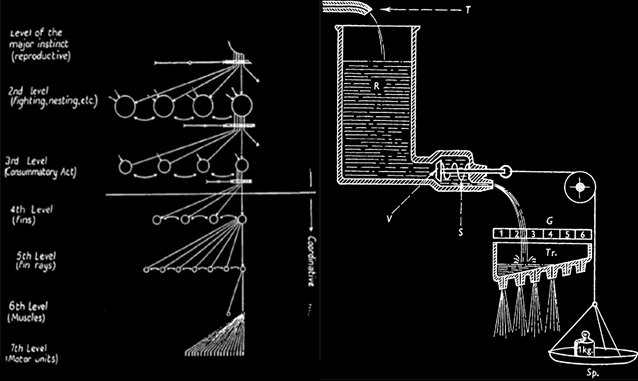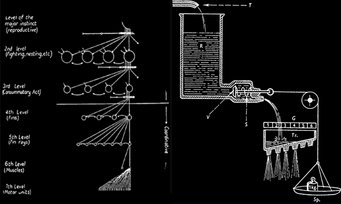Researchers propose a dynamical systems view of internal brain states across species
Max Planck scientists on the future of neuroethological research
In biological and artificial neural systems, state-dependent computation is a key feature of neural information processing. Max Planck Research Group Leaders Jennifer Li and Drew Robson at the Max Planck Institute for Biological Cybernetics in Tübingen, Germany, review the latest data across species to uncover evolutionarily conserved neural dynamics that govern the timing and organization of behavioral states. Now published in the journal of Current Opinion in Neurobiology, they offer a new perspective on the interplay between neuromodulatory dynamics and nested behavioral hierarchies. They suggest a new path forward in neuroethology, to understanding the relationship between recurrent neural networks and complex natural behaviors.
State-dependent computation has a long history, developed in parallel in computer science by Alan Turing and in animal behavior by early ethologists such as Nils Tinbergen and Konrad Lorenz. Recent work in a variety of model organisms (C. elegans, drosophila, zebrafish, and rodents) have begun to revisit ethological theories of behavioral states and hierarchies, with more precise mathematical models of the underlying state-dependent computation.
Dynamics of organized hierarchy

“In larval zebrafish, for example, foraging behavior is hierarchically organized at the level of exploitation and exploration states, which persists for minutes at a time. Each state is then further organized into shorter timescale states such as individual hunting sequences, which persist for seconds. From an ethological view, this is a classic behavioral hierarchy. However, we now have the tools to build dynamical systems models from large scale neural recordings to identify the nested neural dynamics that organize this hierarchy” explains principal investigator Jennifer Li.
In the review, Jennifer Li and Drew Robson reformulates some of the classical ethological theories in a dynamical systems framework. In the process, they identify key limitations in our current understanding of the neuromodulatory activity that underlies complex hierarchies in natural behavior. “The brain does not perform invariant transformations of sensory inputs into behaviors. The internal state of the brain organizes the animal’s goals and motivations. However, there is not a simple one-to-one mapping between a unique set of neuromodulatory neurons and a given behavioral state. Internal brain states are multidimensional and dynamic.” explains principal investigator Drew Robson.
Multi-dimensional state space model

Indeed, the outcome from decades of brain research shows that there is a complex and recurrent neuromodulatory system at work, in which multiple neuromodulatory systems (e.g. serotonin, norepinephrine, dopamine, acetylcholine) interact with one another in a high dimensional state-space. “Each behavioral state occurs at a point somewhere in this state-space, with a set of paths that connect one state to another. We need both a comprehensive view of neuromodulatory activity and a large set of natural behavioral states to untangle this relationship,” Li concludes.
Jennifer Li and Drew Robson are already starting to build a multi-dimensional state space model of internal brain states in zebrafish, which organizes the rich set of natural behaviors in this animal. They are a part of a new pioneering group of computational neuroethologists, opening a new chapter in understanding how our brain works to organize our behavior.

